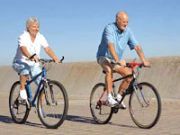Study Shows Unique Benefits of Osteoporosis Medication
Patients with osteoporosis have to deal with many potential complications and comorbidities with their condition, most notably the risk of fracture as a result of the bone loss.

Patients with osteoporosis have to deal with many potential complications and comorbidities with their condition, most notably the risk of fracture as a result of the bone loss.
Researchers at the US Department of Energy’s Advanced Photon Source at Argonne National Laboratory conducted a study that took a closer look at raloxifene (marketed under the brand name Evista), a frequently prescribed medication for patients with osteoporosis. In addition to showing the ways in which raloxifene works like many other osteoporosis medications, the study results also revealed what separates it from other drugs in its class.
Making use of both wide- and small-angle x-rays, the tests helped “define a novel mechanism by which Raloxifene increases inherent bone toughness,” according to a statement from the lab.
“It has always been somewhat paradoxical that raloxifene suppresses bone loss less than other osteoporosis therapies, yet reduces fracture risk to about the same level,” noted David Burr of the Indiana University School of Medicine and lead author of the study.
The statement noted most drugs work to decrease bone resorption or increase bone formation during remodeling. This particular study looked at “the effect of the drug on devitalized bone cleared of living cells that normally mediate resorption and remodeling.”
Testing showed that raloxifene “prolonged the loading that the bone could bear before fracturing,” according to the statement. It also “mediated water retention within the bone matric,” which the authors said proved to increase the bones “toughness.”
Burr said the results of the study and the functions of raloxifene “paves the way for a new class of drugs to treat osteoporosis, therapies that do not act by altering cellular activity or bone remodeling, but act by directly changing the physical properties of the bone matrix constituents.”